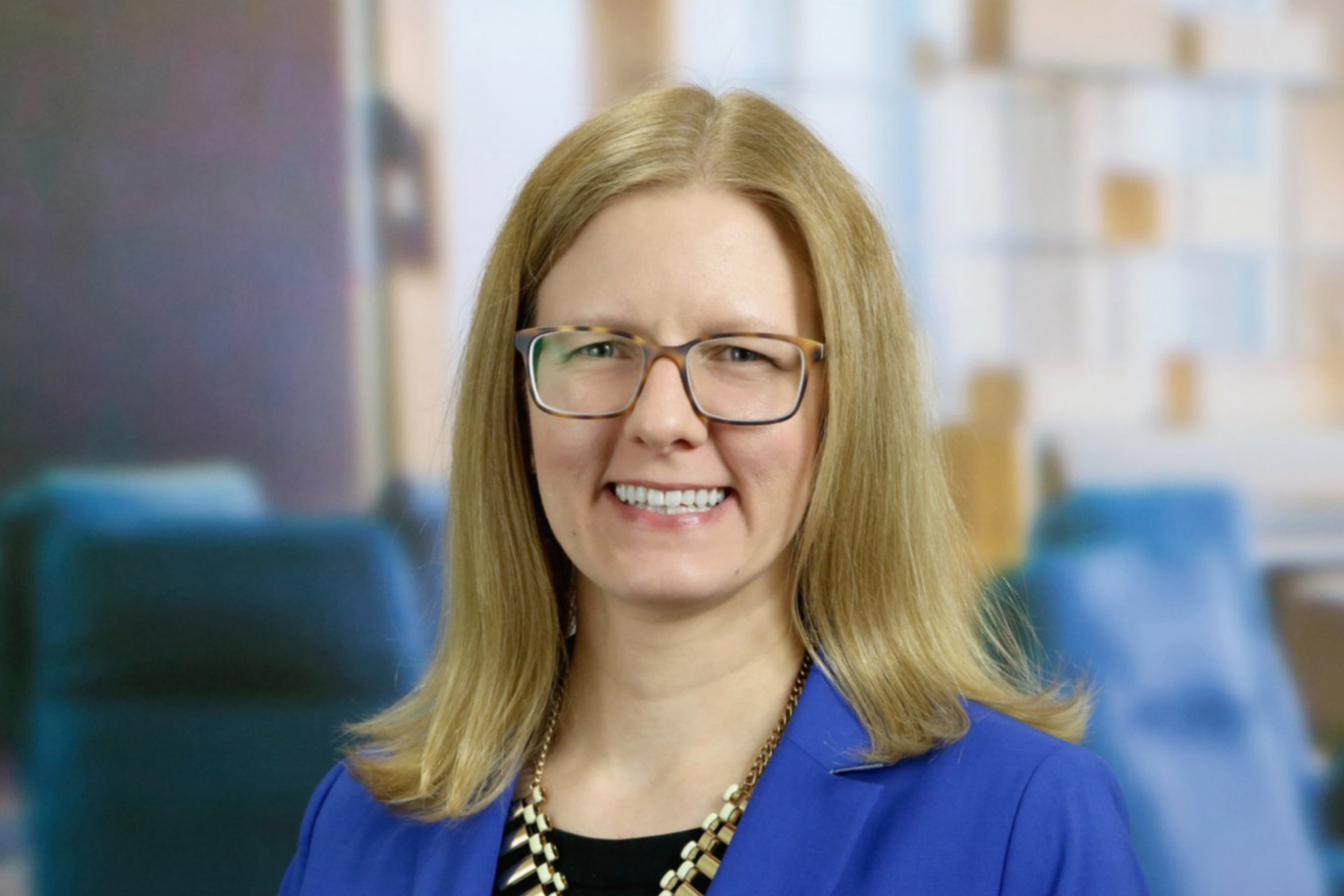EY refers to the global organization, and may refer to one or more, of the member firms of Ernst & Young Global Limited, each of which is a separate legal entity. Ernst & Young Global Limited, a UK company limited by guarantee, does not provide services to clients.

Financial institutions can take four actions to address political change and the risks and opportunities it presents.
In brief
- Financial institutions may be under-estimating the risks related to domestic and international political change to themselves and their clients.
- Policy and political changes affect other risks of top concern to executives, i.e., climate change, COVID-19 recovery, and technology and data transformation.
- Financial institutions should accelerate efforts to build stronger political analysis into strategic decision-making.
Capital markets and the banking system at large are inherently affected by policymaking and political trends. After all, it’s about the supply of credit to customers, companies and the economy (which, as former President Bill Clinton’s strategist, James Carville, pointedly reminded us in 1992, influences political outcomes ).
Banks pride themselves on their longevity over decades or even centuries. They have continually made vital contributions to economic growth, while navigating shifting political dynamics. As such, bank executives could be forgiven for believing they are adequately shielded from the ebbs and flows of politics. This view is supported by data from our 11ᵗʰ annual EY/IIF global bank risk management survey (pdf).
However, the nature of political change – within borders and across them – seems to be changing (e.g., with nationalism and populism on the rise), as is the potential for political change to magnify other risks. In the 18 months since our last annual global bank risk management survey with the Institute of International Finance (IIF), we experienced many political changes, including trade wars, Brexit, a presidential transition in the US, COVID-19, numerous major state-led cyberattacks and an array of climate initiatives in the wake of evermore severe weather events globally.
(Geo)political risks affecting banks or banks’ customers have expanded significantly in recent years, though our 11th EY / IIF global bank risk management survey shows only a subset of chief risk officers (CROs) recognize this. When asked what political risks will have most effect on their organizations over the next year, CROs point to a range of such risks, from shifts in the global trade environment (42%), to cyber warfare (39%) and a push to account for the materiality of climate change (30%). A quarter (26%) identified populism as cause for concern; a recognition populism can accelerate electoral polarization and make policy swings more extreme as new leaders come in. In terms of the impact on banks, CROs also accept that (geo)political risk can affect macro shifts to the business model and revenue, with negative impacts on demand (72%) or unexpected market volatility (67%).
CROs may be underestimating the potency of political change. In our 2021 11th annual risk management survey, only about half view (geo)political risks as among the most important emerging risks over a five-year horizon – this is down from 60% in our last survey in 2019. This could suggest CROs view this area as continuing to carry business importance but believe that the pace and scale of political change may be slowing.
Yet, when one recognizes the connectivity between (geo)political risks and CRO’s top risk concerns – climate risk, the global economic recovery and a shift to digitization – it becomes clear political and social forces behind these developments deserve continued attention from C-suites.
Political risks amplify other risks
Viewing political risks in isolation is a mistake. Politics rarely has direct or immediate impact, at least for financial institutions. In the US, financial services regulators are independent of the executive branch of government (albeit presidents get to pick new leaders of those regulatory organizations, in time, and some have more independent funding sources than others). In Parliamentary systems, government may have more direct control and influence (depending on the independence of central banks and their role in banking supervision).
Instead, political risk typically amplifies or shapes other risks that have a more direct impact on banks. Politics or politicians change, which leads to policy shifts, which leads to changes for banks’ customers and the economies in which they operate. Our 11ᵗʰ annual risk survey highlights three examples where politics has an amplifying or cascading effect.
Progress toward addressing climate change
Climate change was the top emerging risk over the next five years, according to bank CROs (91% selected that risk). While climate change has clear direct impacts on banks (e.g., the effects of more extreme weather events on their operations), it also is worth reviewing through a political lens. Climate-related policy objectives are woven – and debated – within the context of legislative and regulatory agendas, as recently seen by the process surrounding the US’s trillion-dollar infrastructure spending bill or, before that, the presidential executive order on climate change. Changing regulations are guiding or forcing many industries to re-invent themselves, such as the shift to renewable energy sources, sustainable infrastructure and electric vehicles. These all require significant corporate investments and financing for those investments.
The role of financial institutions in financing decarbonization is central to companies achieving a zero-carbon economy, and the extent to which the needed supply and demand for finance develops will depend at least partially on political and policy winds. Still, few financial institutions identify environmental and climate change regulations – versus climate change itself – as a top concern in EY’s recent Geostrategy in Practice survey of more than 1,000 CXOs, for instance. They may not fully recognize how the politics surrounding decarbonization will influence their client, customer and employee financing and insurance needs in years to come.
Length and depth of global economic recovery
While 83% of CROs view the global economic recovery as a defining risk in the coming years, executives need to consider similarly tracking the role of policy in influencing this recovery. Throughout the COVID-19 crisis, policymakers have faced trade-offs between prioritizing “lives” versus “livelihoods” – with significant implications for economic growth and financial market performance. Monitoring and forecasting fiscal and monetary policy evolution, as well as the future of trade protectionist policies, can help banks more properly prepare for various recovery scenarios.
Similarly, banks should continue assessing the (geo)political risks relating to how the economic recovery affects socioeconomic inequality within major markets. Those conditions have at times led to populist movements. Societal unrest, in particular, could be a blind spot for financial institutions, as only 23% view it as a top risk. Such unrest can create or prolong political stalemates on needed policy reform (e.g., on public infrastructure investments) or generate public discussion that quickly translates into new policy or greater societal expectations on companies (e.g., growing pressures on companies to appropriately address diversity and inclusion matters).
Pace and breadth of change from digitization and technology transformation
CROs overwhelmingly recognize that the speed and depth of digitization constitutes an emerging risk (68%), but are financial institutions sufficiently prepared to assess how policymakers will evolve their approaches to a more data-driven world? The broadened use of policy actions to address perceived risks associated with certain tech sector companies or transactions in various regions continues to shift how M&A activity or growth is pursued. Data privacy and data localization concerns, which financial services respondents identify as a key concern, will similarly affect banks’ and other institutions’ localization strategies.
Financial institutions should recognize that state-backed digital currencies have the potential to dramatically alter their role in society and the economy, and that of central banks. More immediately, politically driven cyber attacks are anticipated to grow significantly in the months and years ahead. All of these technology-focused (geo)political risks will affect banks’ digital transformation agendas.
Banks can embed political analysis into risk-based decision-making
Given the importance of evolving (geo)political risks, there are four ways financial institutions can prioritize actionable steps to address the strategic and financial impact from these risks:
- Better integration into risk frameworks: The degree to which banks systematically analyze political risks varies across the industry. A key trend is leveraging more of that analysis into banks’ own decision-making processes. Nearly half of bank CROs (48%) plan to broaden methods for identifying new or emerging political risks and a quarter plan to build new tools for qualitative tracking and reporting on political risk measures. Some banks are connecting employee communications to a broader enterprise risk approach to social risk (36%).
- More holistic scenario analysis: Scenario planning offers another opportunity for financial institutions to improve how they factor in political developments. Nearly half of bank CROs (48%) view political considerations as critical to developing future scenarios. But likely many of those still view politics as a discrete manner – the impact of China’s role, post-Brexit Europe, etc. A more sophisticated approach would be to assess how political matters may accelerate or mutate other scenarios being considered in the short and long term.
- More engagement of employees on social issues: Only a small minority of banks (13%) are happy with their current approach to managing social risks. Being human-capital-driven organizations, two-thirds of banks are now proactively communicating with their employees on social issues. In a period that has seen high levels of social protests and tensions in many major economies, banks seem to recognize the reputational risks inherent to the business environment. A fifth of banks have set up cross-functional offices to chart strategies on these issues.
- Top-down and bottom-up stakeholder engagement: More than a third of survey respondents coordinate with peers directly or via industry groups to address growing societal risks (36%). This focus seems to be growing, as nearly 3 in 10 CROs said that they plan to invest in connecting with industry groups to coordinate actions on political risk in the coming year. And internally, CROs should continue driving dialogue with senior leadership on the impact of politics. Almost three-fifths (57%) of CROs indicated that, over the next three years, they plan to invest more time in engaging with executive leadership and the board on political risks to inform decision-making, which is considered a best practice.
One could debate forever whether political risk is increasing or not. Populism and nationalism seem to be on the rise globally, but one could hark back to many other times in political history and say those same themes were present then (in some ways, more so). The difference today may be the way in which political risk is transforming other key risks affecting financial services firms and their clients through policy change. This means banks not only have to invest in political-risk analysis, but they also need to embed those insights into strategic and day-to-day risk-based decision-making.
A special thanks to Ben-Ari Boukai, Assistant Director, Geostrategic Business Group at EY, for his contribution to this article.
Summary
(Geo)political change creates significant risks for financial institutions and their clients. Whether it’s direct policy change or the way in which political change can affect other risks, more investment is needed. By leveraging more sophisticated political-risk analysis into corporate decision-making, firms can implement approaches to mitigate the impact or capture opportunities political change presents.
How EY can help
-
Discover how EY can help the banking & capital markets, insurance, wealth & asset management and private equity sectors tackle the challenges of risk management.
Read more
Related articles
Why workforce resilience is now a critical focus for bank CROs
The 11th annual EY/IIF global bank risk management survey reveals the growing importance of workforce resilience in the wake of COVID-19. Get the details.
Why digital resilience must be a top priority for banks
The 11th annual EY/IIF global bank risk management survey reveals the growing importance of digital resilience in the wake of COVID-19.
How COVID-19 has changed the role of the chief risk officer
The 11th annual EY/IIF global bank risk management survey shows that COVID-19 has exposed what resilience really means for banks today. Learn more.
How resiliency in risk management is the new top priority for banks
The 11th annual EY/IIF global bank risk management survey shows that COVID-19 has exposed what resilience really means for banks today. Learn more.
What good risk management means for operational resilience
The 11th annual EY/IIF global bank risk management survey inherently links strong risk management and robust operational resilience.
Climate change and risk: 3 key challenges facing banks
Climate change is now a major risk, but there are multiple obstacles to overcome if banks are to be resilient.









